The comments appeared in the local area before people saw the show: 20 naked dancers in a performance entitled “More Than Naked” apparently can still shock the good taste and common sense. But what lies behind this nudity, which, actually, in full 21st century – when I believed that taboos had been shattered, including after so many experiments (it is enough to think strictly of visual arts and for example, at the Viennese Actionism or the performances from the 70’s Ion Grigorescu, leaving aside the theater and the dance scene, the more rich in performances involving nudity) – should no longer provoke violent reactions?
I met the creator of this show, choreographer Doris Uhlich, at the hotel where she was staying, right after her arrival in the country and even before she started the rehearsals for the performance at the Studio Hall of the National Theatre in Bucharest, which took place Friday night, 11 December, immediately after the National Dance Center Awards, now at their second edition. She was radiant, open and ready for a conversation about dancing, nudity and living the naked body experience on stage. Doris Uhlich was born in 1977 in Austria and studied contemporary dance pedagogy at the Vienna Conservatory. She originated numerous shows, she currently teaches choreography and has won various awards for her performances, such as “Remarkable Emerging Choreographer” in 2008, or ” Award Outstanding Artist 2013″ in the category of performing arts (BM: UKK, Ministry of Education, Arts and Culture).
“More Than Naked” premiered at the Bucharest National Dance Center (CNDB) in collaboration with the Austrian Cultural Forum in Bucharest and the Austrian Federal Chancellery.
Was there a precise time in your life when you realized that you wanted to study choreography, working with your own body, something that we all possess?
It is important to mention that I was born and raised in a village somewhere in Austria, not in Vienna, where culture occupies the spotlight, so I was born far away from culture. I was watching TV, I had 11 to 12 years, and I enjoyed a lot “Flashdance” or “Saturday Night Fever” – and then I said yes, this is what I want to do, I want to dance! Afterwards I attended a ballet school and I started with jazz dance and tap dance, so far away from the range where I am now. When I moved and studied in Vienna I came into contact with contemporary dance and improvisation, something that was totally new for me. I studied dance pedagogy. At first I did not want to become a choreographer, but a dance teacher. My main passion was to teach dance to people. After the second year of studies, I felt that there was a creative impulse in me, that I could actually make my own projects and I could dance on stage. But I did not have this vision before.
This dimension of you as a teacher – do you believe it is still influencing you in respect to the way you work?
Yes. I still teach a lot. I am a mixture. I am a teacher, I am a choreographer, I am a performer. I teach six classes a week in Vienna for non-professionals, I organize several workshops for professional dancers, I am also working with actors and overall I am extremely passionate to translate my artistic ideas into classes and share them with people.
Are there any differences between working with professionals and working with those who have no experience? Do they have different sets of questions? Are some of them more shy, reluctant to others?
To be honest, there are no big differences. We all have a body and the body is the vehicle that carries us through life. I teach a lot of improvisation and I think everyone is a professional, as long as there is a special interest.
Because it all comes down to the body, something common. It is the essence. Before “More Than Naked”, you made “More Than Enough”, a show where you perform alone, with your own naked body. How was that experience and how did you make the transition to the next step?
In this show, I questioned what would constitute a body perfect for dance. In the reviews I am regularly described as a stout dancer and I often asked myself why are they always mentioning that. And so I wanted to do a show about my own beauty, my body in movement. I invented a technique – the fat dance technique. I would move my body, the flesh, to the music of Vivaldi, baroque music. Following this technique I developed, I initiated workshops of naked body dance. I realized we had to celebrate also the softness of the body, the flaccid flesh, not just the muscles and strength, strength, strength. In our society we put an emphasis only on fit, perfectly built bodies. But I think it’s interesting to see how the flesh feels good. And I wanted to share that with people. So I invented the “More Than Naked” workshop, not thinking then about a possible show as well. At first came only 8 dancers, but in the following year at ImPulsTanz Festival, the international dance festival in Vienna, there were 25, the news had spread! It was something new. You see many naked people on stage, this is not a novelty, but never a teacher to teach this nakedness, a teacher interested in the naked body and its possibilities. The body is for me the whole human being. The body is everything.
I wanted to ask you about the reception of the “More Than Naked” performance. For example, now in Romania, it has already raised some comments around nudity. How was it received from 2013 till today in different countries?
Nudity, as it is celebrated in “More Than Naked”, is activated differently by the different types of viewers. In Austria it is something habitual, but the novelty is that in this show we are not presented as naked bodies, we are naked. On stage we do not promote an image of nudity but an experience of this nudity. What emotions are there generated in the naked body when it jumps, moves, dances on Madonna, for example? In Vienna, the spectators were very open and the atmosphere was incredible: more and more people wanted to see this performance. But from one country to the next the situation is different. For example, in Estonia people are more prudish, although going to the saunas a lot they have not yet become accustomed with the presence of the naked body on the stage, in plain view.
You talked about the beauty of the body and that you basically go beyond this dualism of ugly/beautiful body. How did you select the twenty performers?
In this version, performed in Bucharest, the selection was made following the workshop that took place in Vienna, in 2012. These 20 people were present there. The selection was natural as a result of their interest in this show. I did not want to make decisions like: in my show I must have Asian people, people of color, thin and fat. Everything was purely random. Who was present then and there joined the show.
Was it all improvisation at the beginning? Is it a collective performance, conceptualized along with the dancers? Has it now become a show with fixed, predetermined moments?
Yes, now it is more or less a fixed show. Although at times it relies more on energy than on form. We started by improvising during the rehearsals. Along with the dancers, together, we found that material which we needed and then we stopped at what is now.
When I watched a few minutes of this show on the internet I thought of Bosch’s painting or the Renaissance representations of Paradise or Hell, of contorted bodies. It looks like a micro-society scene. Does this performance include also a political message about our society? Is it a different kind of society that is presented in your performance?
It is no accident that the dancers on stage are not 5 but 20! 20 people are more than one group, they can form a small society. We are celebrating the body and it is the starting point, it is the epicenter of our every action. Without a body you cannot do anything. For me a body is a sort of archive, storing our own biographies but also the biographies of our countries, and even a biography of the world in which we live. They are inscribed in our flesh. When you begin to move your body, to shake it, you begin to put into motion this archive storage system. For me the body is like a brain. We do not think only with the mind but also with the body. Each cell is a thinking brain. In “More Than Naked” we activate and mobilize the human being as a whole with a big, big brain. And this is for me a political moment. People feel liberated on stage and become borderless. A naked body allows you to live certain emotions that you cannot experience when you are dressed. Our body is a part of this capitalist system: we strive to make it as nice as possible, following as a pattern all those characters promoted by the media and advertising. We live surrounded by so many images of how our bodies should look. And in “More Than Naked” this image is not important. When you allow your naked body to dance and fly and push against … and when you give your body a voice, when you hear your flesh resonating on the floor and in relation to other bodies just as naked – that is something reviving and liberating.
So it is ultimately a tribute to the body itself, to the human being. We live in a society that is slowly dehumanized, we live in a machine-society, we are numbers in a giant mechanism. Your show makes me also think about the contemporary art projects that are trying to mark changes in the community. For example, the Turner Prize, announced this Monday, December 7, was won by a collective of architects and designers, Assemble, for the first time in the history of this award. This is a collective, working in a community of Liverpool, trying to resuscitate it, to give it a chance, and the news announced “no genius artist this year at Turner Prize.” In the current political context I find it important to notice such attention to the human being and especially the community. Not to reduce art to the aesthetic, to an abstract museum piece, but to make of art a collective act, involving present people.
Yes, and to have a vision about the body, about its energy … the times we live in today generate a lot of fear or spaces of fear. It is extremely difficult to have a general overview of the international political relations. The body’s reaction is to close more and more, becoming immovable, paralyzed. Because you do not know how to move in this worldly complexity. And I think it is amazing to say “Hi, body! Who are you? What are you? Hey, I am activating you again, I am summoning you, because I need you so that I can get back into action.” If I want to change something in this world, I must begin by changing my own body system. I have to open myself again. I must feel good with my body, I must be present.
Do you think you can become socially subversive with such a show?
It is just a show, not a radical program of change. But I think it activates a different way of looking at the human body and its possibilities. On stage, there is a lot of energy, power but also fragility and humanity, which I think touches you, as a spectator, on many levels. People feel good on stage, the enjoy themselves. Many people might go home and start thinking about what they saw on stage, and begin perceiving their bodies as recipients, as archives. Many people wrote to me that after seeing the show, they got naked and danced in their apartment, watching their bodies. “I reconnected with my inner self,” they said. Once you see the show you want to become a part of this group of 20 dancers.
Don’t you think the viewers feel vulnerable when watching this performance? They feel different. It may seem paradoxical, but it seems that you can feel ashamed, fragile, in your own clothes, when watching this show with people who feel good in their skin, literally.
But do you feel ashamed for them or for you?
It is a good question. For both sides, but maybe precisely for myself …
Yes, but we are not 20 naked machines on a stage. We are also vulnerable. And every audience is different, every show is different… There are days when I feel good with my body and days when I want to cover it, to hide, to close myself up, days when I do not have so much confidence in me. At the beginning of each performance fragility is sensed from both sides. But what I can tell you is that after 10 minutes, nakedness becomes like a suit. It is about what the body does and not about his status of naked body. I think in the first minutes as a spectator you are watching each body, its shapes, but as the show progresses, nudity becomes normality.
What impressed me is the sound of these bodies, that they are made to perform also at an acoustic level, not just on the physical level of a sculptural movement in space. It seems like a consideration to the senses and especially the sense of touch, always considered an inferior one.
It is something very specific, very practical. Just as children discover their body as a new playing material. In this show I am not interested in talking to the other, but to feel him and see what our bodies can do together.
So it is about communication.
Yes, it is communication and openness. It is not about sex and sexual images, although our bodies are used in contemporary society as sexual objects.
That is also the great problem of the press when labeling this show as prohibited, as one potentially pornographic.
That is the great thing with “More Than Naked”: here the 20 people are far from these images. It is an exhausting show for them. They sweat a lot, working a lot with the body, putting it to work … far, far away from go-go dance… And the touches between dancers on stage are, in a way, very raw, very spontaneous. It’s all about giving the body a voice.
What is the future of this performance? Will you travel with it next?
I have already traveled much with it. There are three versions of the show and I hope that will continue. Last summer I organized a new workshop entitled “Everybody More Than Naked”, assembling together professionals and non-professionals, with ages between 18 and 70 years. It was great. And in the future I am already thinking about a public performance, on stage, entitled “Everybody More Than Naked”. And this will also be a transgenerational show- flesh to flesh, at any age.
This interview was broadcast Saturday, December 12, in the show “How to know you’re an artist?”, on Radio România Cultural.
POSTED BY
Daria Ghiu
Daria Ghiu (b. 1983, Bucharest), PhD in Art History and Theory from the National University of the Arts in Bucharest, with a thesis focused on the history of the Romanian Pavilion in Venice. Between 2...


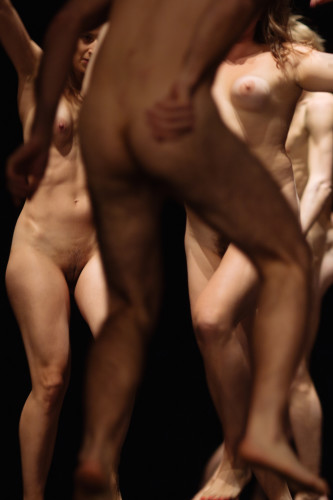
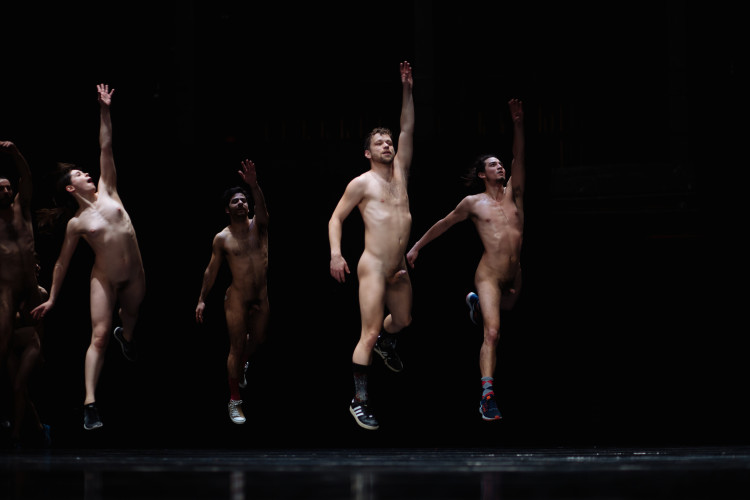
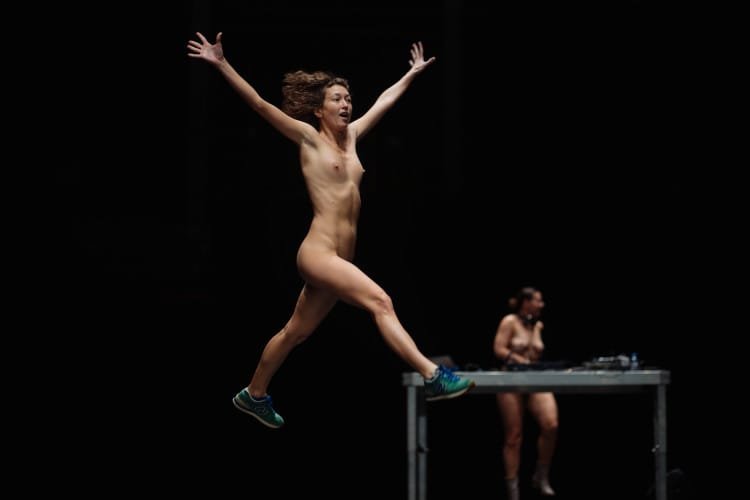
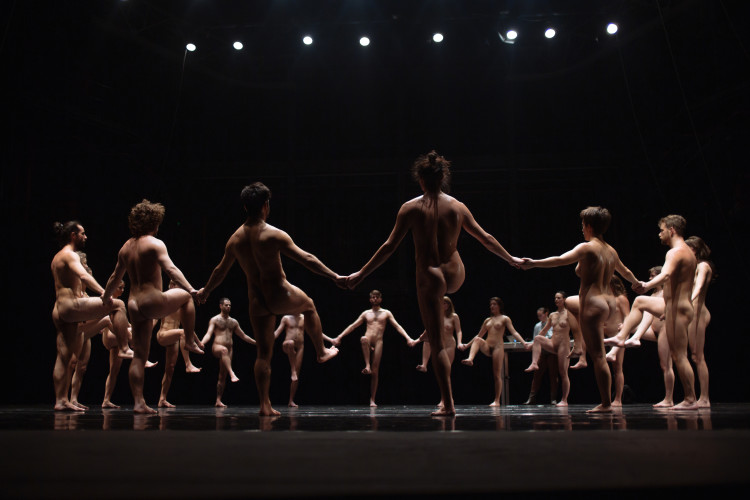
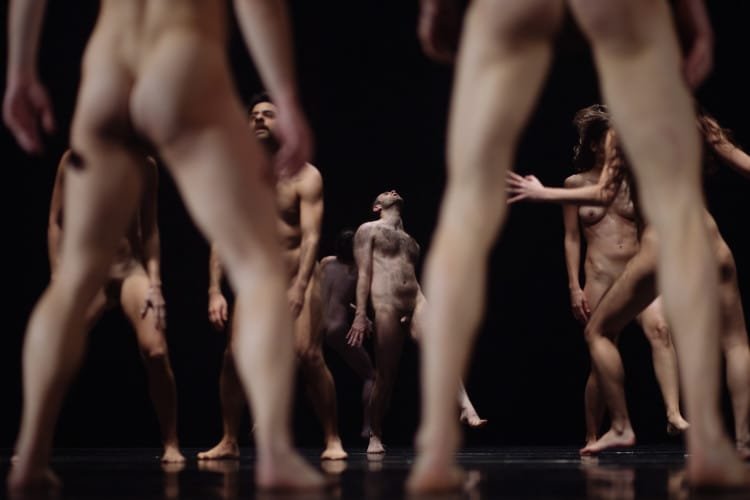
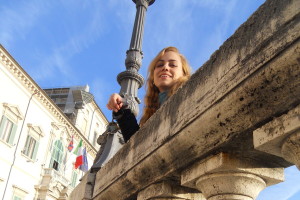
Comments are closed here.